In recent years, there have been more and more functions for smartphone integration, but in terms of basic audio amplification applications, there is still room for improvement in terms of continuing to optimize performance and user audio experience. The reason is that there are special audio requirements for smartphones, such as: smartphones with baseband/application processor, FM (FM) broadcast, Bluetooth (headphone) and other audio input sources; codec (CODEC) can be integrated in analog baseband It can also exist independently; in most cases, at least the speaker amplifier remains separate (not integrated), providing sufficient output power; the headphone amplifier is externally mounted for high-fidelity (Hi-Fi) music playback.
This article will focus on the performance requirements of speaker amplifiers and headphone amplifiers for smartphones, introduces the corresponding audio amplification solutions from ON Semiconductor, and a new audio subsystem solution that integrates stereo headphone amplifiers, Class D speaker amplifiers, and I2C control—audio Management Integrated Circuit (AMIC).
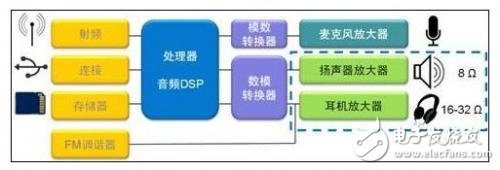
Figure 1: Schematic diagram of audio amplification application for smartphone
Speaker Amplifier Performance Requirements and Solutions For smartphones, the desired speaker amplifier should provide low electromagnetic interference (EMI) to avoid interference with other radio frequency (RF) circuits in the smartphone. As far as the user's actual application is concerned, the user sometimes wants to make a hands-free voice call in a public place, and sometimes wants to watch the video with audio playback. This requires the speaker amplifier to provide a high-resolution output volume while providing low distortion. In addition, low noise is also an important feature provided by the desired speaker amplifier. Specifically, this requires a speaker amplifier with a high power supply rejection ratio (PSRR) to suppress time-division multiple access (TDMA) noise due to battery voltage fluctuations during GSM signal transmission; it also requires no popping during turn-on and turn-off (pop) And click noise.
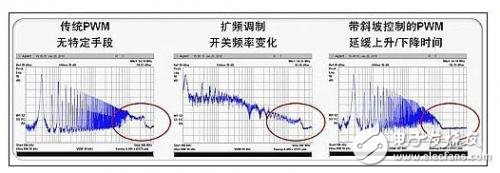
Figure 2: Different technologies for reducing EMI
To meet these desired performance requirements for smartphone speaker amplifiers, Class D amplifiers are an excellent choice. Class D amplifiers provide very low EMI and avoid interference with other RF circuits. In effect, the class D amplifier converts the input analog audio signal into a pulse width modulated (PWM) pulse signal, which is then used to control the switching device to turn the audio power amplifier on/off. For smartphone applications, to reduce EMI in the audio output section, it is important to reduce the portion of the spectrum at higher frequencies. Traditional PWM technology has no specific means to deal with it. But to do this, two techniques can be used, one is PWM spread-spectrum modulation (switching frequency variation), and the other is PWM with ramp control (delayed rise/fall time). In comparison, the slope control technique is more effective than the spread spectrum modulation technique in reducing the frequency spectrum of higher frequencies, which is more conducive to reducing EMI.
ON Semiconductor's NCP2824 is a 2.8 W mono Class D amplifier that uses ramp control to provide low EMI. In addition, the NCP2824 provides real-time configuration of automatic gain control (AGC) over a single-wire interface. Its automatic gain control function consists of two modes, non-clipping and power limiter modes. For speaker amplifiers, clipping occurs when the battery voltage of the smartphone is very low, resulting in reduced output saturation and saturation. The NCP2824's automatic gain control "no clipping" feature maintains low distortion and allows selection of the maximum total harmonic distortion (THD) threshold. On the other hand, excessive output power occurs under high output power conditions, causing the output swing to decrease and saturate. The power limiter function limits the amplifier's output power (the maximum output voltage threshold can be selected) to protect the speaker from damage caused by excessive volume.
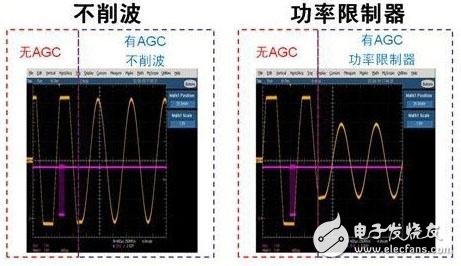
Figure 3: NCP2824 supports automatic gain control without clipping and power limiter modes
In addition to low EMI and low distortion, the NCP2824 performs exceptionally well on other key performance indicators of audio amplifiers. For example, this device delivers excellent signal-to-noise ratio (SNR) performance of 95 dB, providing excellent audio performance. In addition, the NCP2824 has an excellent power supply rejection ratio (PSSR) with a PSSR of -72 dB at 217 Hz. The NCP2824 also provides up to 92% energy efficiency, helping to extend battery life in portable devices. Operating from 2.5 V to 5.5 V, the device supports fully differential inputs (thus eliminating input coupling capacitance) and requires only one external capacitor. The device also provides short-circuit protection for applications such as smartphones and mobile Internet devices (MIDs), navigation devices, portable game consoles and portable media players.
Headphone Amplifier Performance Requirements and Solutions Smartphone users expect to enjoy high-fidelity (Hi-Fi) quality music playback through headphones, which requires low distortion in the headphone amplifier. Since the earphone is close to the human ear and directly affects the user's hearing experience, the headphone amplifier must have no audible noise. This feature is more important to the headphone amplifier than to the speaker amplifier. In addition, headphone amplifiers are also required to be energy efficient, helping to extend music playback time.
In order to meet consumers' higher requirements for headphone audio quality, portable consumer devices such as smart phones require high quality stereo headphone amplifiers. When designing the output stage of a stereo headphone amplifier, designers need to choose a more suitable solution from different options such as capacitive coupling and true ground. The capacitive coupling scheme is energy efficient because the power supply is only powered by the positive output signal; however, this solution requires large coupling capacitors (which can breed size and cost) and poor sound quality at low frequencies. In comparison, the real grounding scheme does not require the use of coupling capacitors, has good low-frequency response, and the headphones are grounded in conjunction with conventional converters, but the true grounding structure is not energy efficient. In general, the true grounding scheme provides lower distortion and smaller solution size, with an emphasis on improving energy efficiency and helping to extend audio playback time.
For headphone amplifiers, static power (ie, quiescent current) is a major component of their overall power consumption in order to provide a comfortable level of hearing. Therefore, minimizing quiescent current is critical to improving the energy efficiency of the headphone amplifier. The NCP2815 is an ultra-low quiescent current (Iq) stereo headphone amplifier from ON Semiconductor that provides ultra-low quiescent current of 1.8 mA to help extend audio playback time.
The device also offers a high-impedance (High Z) output mode that supports audio input/output for the audio jack. The NCP2815 supports common mode sensing and eliminates ground loop noise. The device supports a wide supply voltage of 1.6 V to 3.6 V and is powered by 1.8 V with a load of 16 ? The power consumption is only 20 mW and the total harmonic distortion plus noise (THD + N) is less than 0.01%. The NCP2815 provides a high power supply rejection ratio of -100 dB, providing a fixed internal gain (-1.5 V/V) or external The gain is adjusted and pop and click noise cancellation circuits are also provided. The 1.2 mm x 1.6 mm CSP package makes the NCP2815 the smallest part of its class on the market.
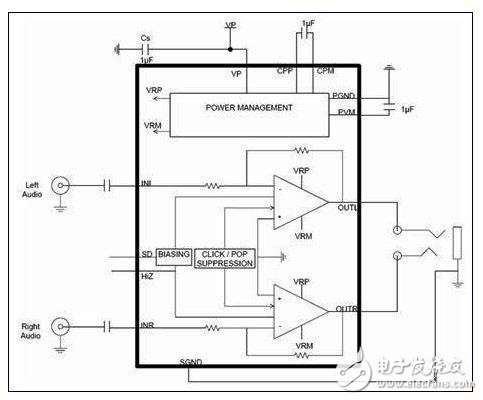
Figure 4: Block Diagram of the NCP2815 "Long Play Time" Stereo Headphone Amplifier
Audio Subsystem Solution - Highly Integrated Audio Management ICs ON Semiconductor, the premier high-performance silicon solution provider for energy-efficient electronics, not only introduces these stand-alone high-performance speaker amplifiers and stereo headphone amplifiers, but also Integrated audio subsystem with audio headphone amplifier, speaker amplifier and I2C control - Audio Management Integrated Circuit (AMIC) provides flexible cabling and muxing between the speaker and the two audio input sources of the headphone output. Such as NCP2704 and NCP2705.
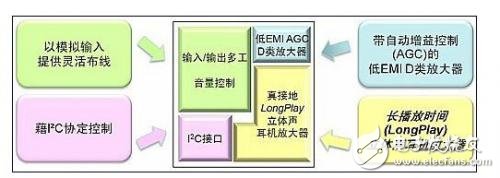
Figure 5: Functional diagram of the audio management integrated circuit
Among them, NCP2704 is a PWM Class D audio management integrated device with ramp control to help reduce EMI. This device provides fully programmable automatic gain control to ensure excellent audio output quality and protect speakers. The NCP2704's integrated headphone amplifier features ultra-low quiescent current consumption to help extend audio playback time. The device also offers extensive input/output multiplex control to increase device flexibility. The NCP2704's integrated headphone amplifier has a THD+N value of only 0.02% and a speaker amplifier of 0.042%; the corresponding headphone amplifier has a power supply rejection ratio of -100 dB and a speaker amplifier of -89 dB. The NCP2704 provides a wide and accurate gain selection. (Mute and -60 dB to +12 dB).
The NCP2705 is also a Class D audio management IC with features similar to the NCP2704, but the NCP2705 adds common mode sensing. This feature improves crosstalk performance, especially in the case of FM tuners with parasitic resistance. The NCP2705 has a lower THD+N value, 0.01% for the headphone amplifier and 0.017% for the speaker amplifier.
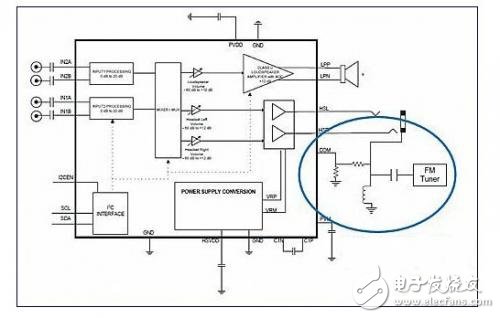
Figure 6: Block diagram of Class D audio management IC NCP2705 with common mode sensing
Audio output applications for portable products such as smartphones require low EMI, low distortion, high power supply rejection ratio, and an energy efficient audio amplification solution. Designers use the NCP2824, a Class D speaker amplifier with ramp control from ON Semiconductor, to effectively reduce high-frequency EMI interference to RF circuits while ensuring that the speakers play audio with the “No Clipping†Automatic Gain Control (AGC) feature. Provides low distortion and protects the speaker from damage with the “Power Limiter†AGC function. At the same time, designers use the ultra-low quiescent current stereo headphone amplifier NCP2815 from ON Semiconductor to extend the audio playback time of smartphones. The NCP2704 and NCP2705 are audio management ICs with low EMI Class D amplifiers, automatic gain control and "long play time" headphone amplifiers, providing flexible multiplex and routing with I2C.
Plastic Coated Electric Kettle
The original stainless steel double wall Electric Kettle. This kettle comes with 100% stainless steel interior. Outside made by plastic for protect your hand in case that the hot stainless steel will scald your hand. No plastic in contact with hot water. The spacious kettle has a volume of 1.8 liters which give ample space to boil tea, coffee or soups in minutes. Lets you boil a huge quantity of liquid at a time and helps save time and electricity.
· Stainless Steel Body With Plastic Outside: Ergonomic in design, the electric kettle has a sturdy handle with smart contours to make your grip a firmer one. The stainless steel finish gives a glossy feel and boasts a rust-free performance. This stainless electric kettle comes with a convenient spout so that liquid can be easily poured from it directly into a container. It avoids any spillage and thus prevents your kitchen from getting messy.
· 360 degree rotational body with separated base: Enjoy the ease and convenience of cord-free serving with this stylish stainless steel kettle. Perfect for placing on the table for gatherings or leaving on the base for worry-free hot water any time of day.
· Automatic shut off when water boils or dry: This overheat safety protection feature of the electric Kettle helps to prevent hazardous accidents. The cordless electric kettle switches off if the water inside the kettle dries up. It also saves on electricity as it uses very less power.
· Lightweight and Portable: Carry your kettle anywhere to enjoy a warm cup of coffee or tea away from your home. Kettle not only looks good but maintains a high standard in terms of durability. Lightweight and its small dimensions snugly fit in your bag. Portable and small in size, this electric kettle makes a perfect travel companion.
· Cool touch Exterior: With out cool-touch design. You`ll be able to touch the outside of the kettle even when it`s boiling. There`s no risk of getting accidentally burnt, so it`s perfect for homes with young children.
Application:
Enjoy your coffee.
Cook egg for morning.
Boil some lemon tea
Plastic Coated Electric Kettle
Plastic Coated Electric Kettle,Household Plastic Kettle,Colorful Water Kettle,Auto Shut-Off Electric Kettle
Guangzhou Taipeng Electrical Appliances Technology CO., LTD. , https://www.kettles.pl